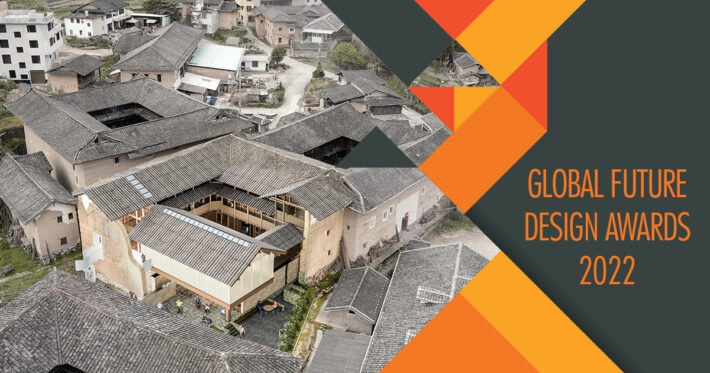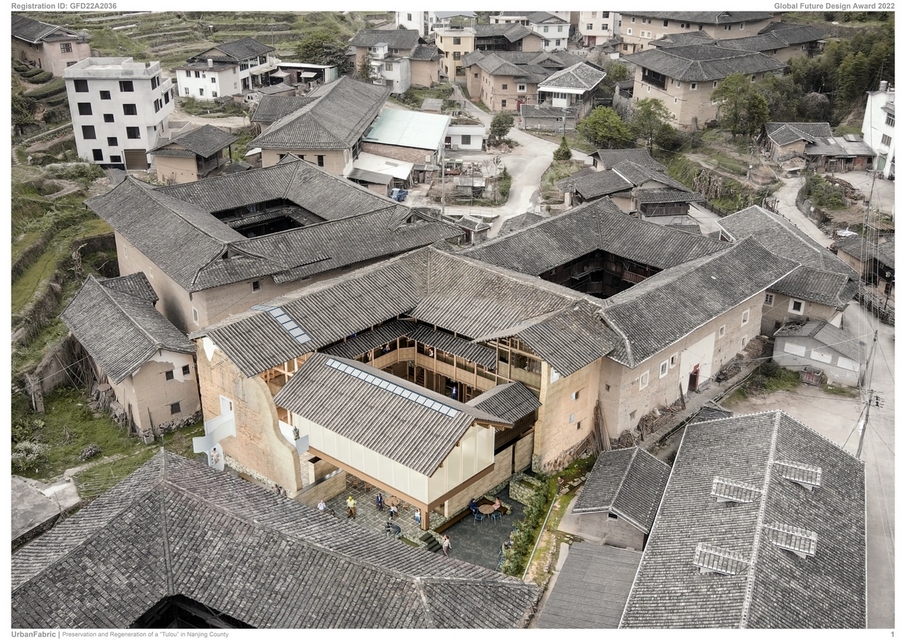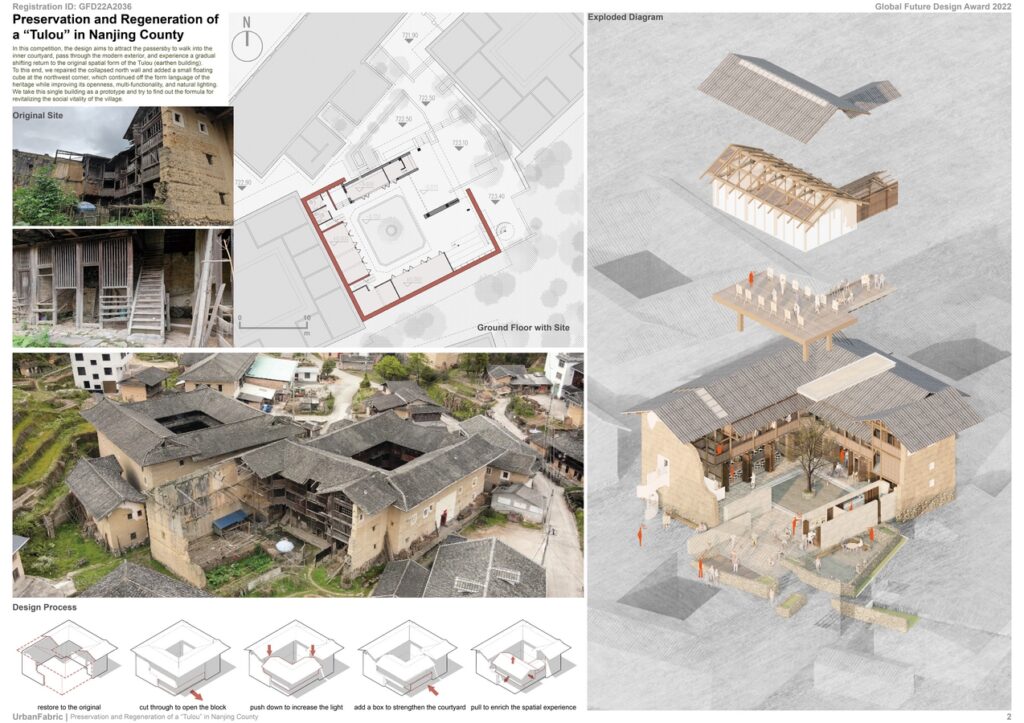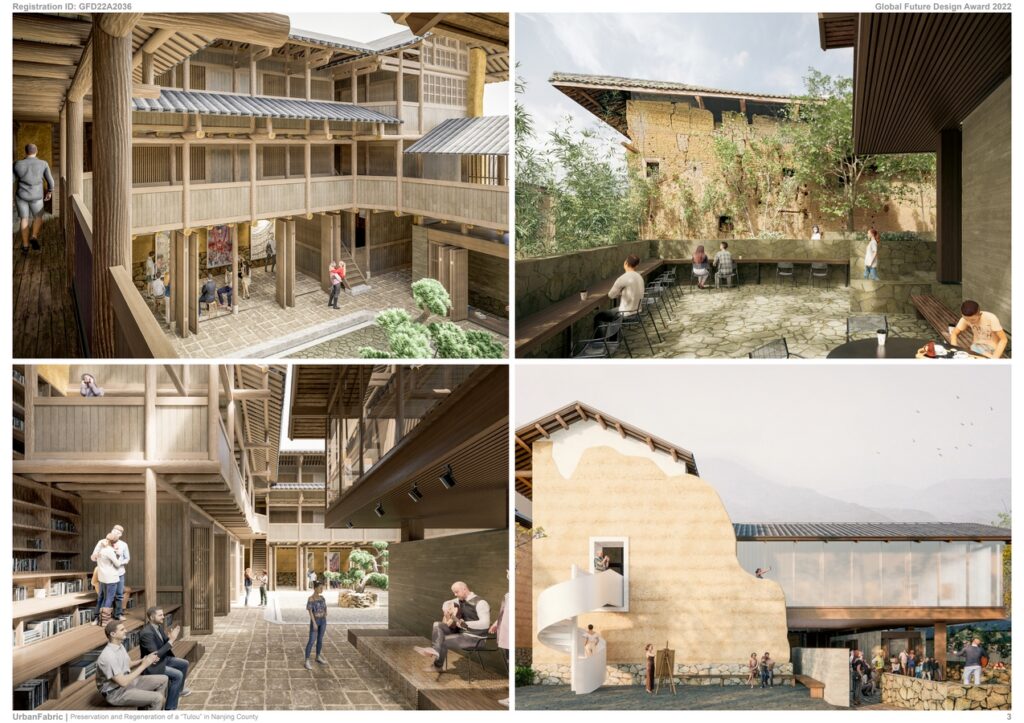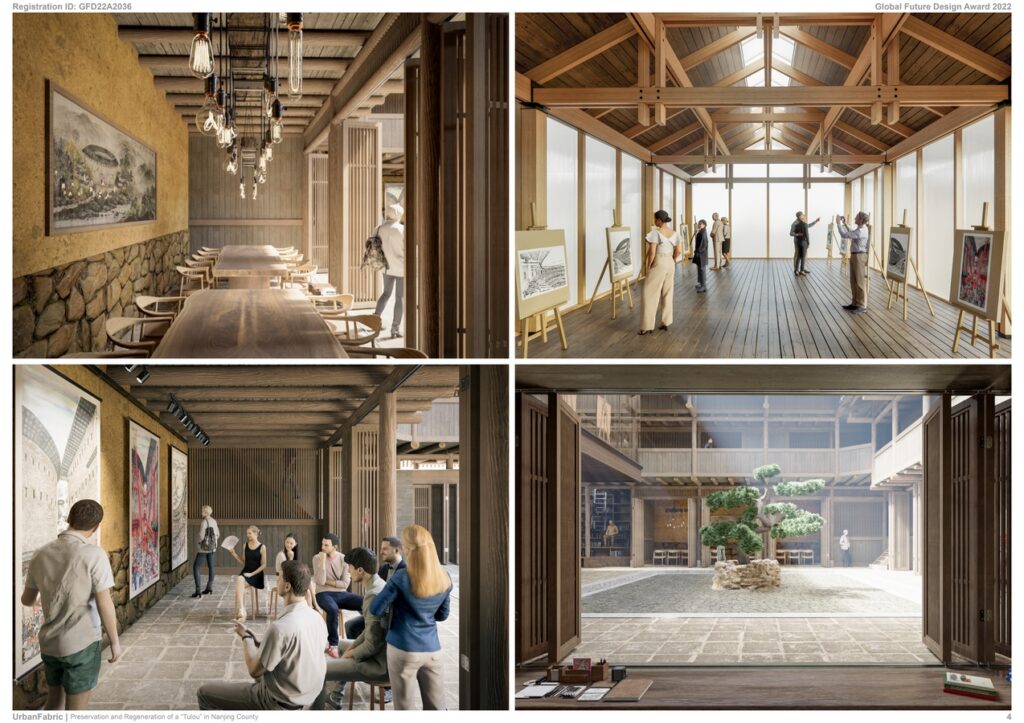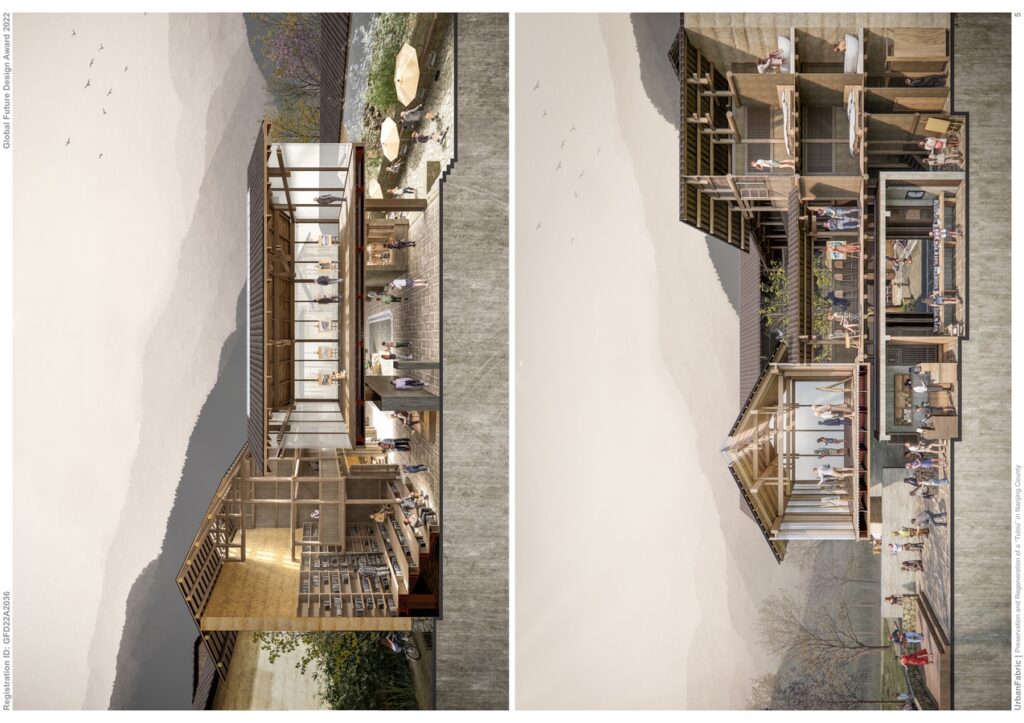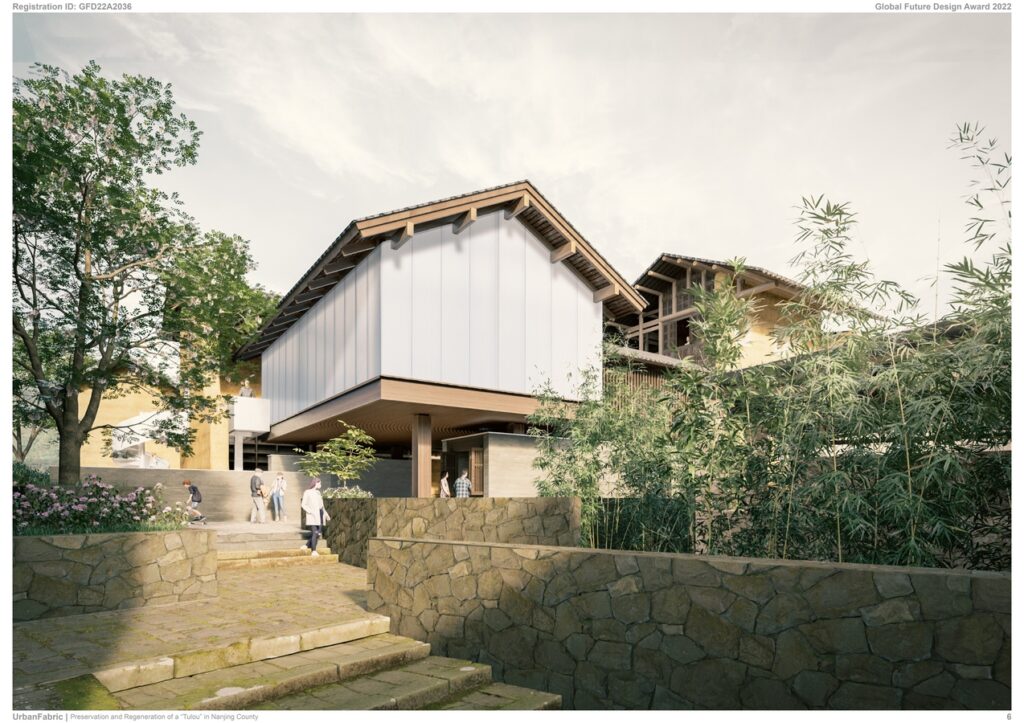In this restoration and regeneration of a Tulou (earthen building), what has changed is the building’s usage of the people and related programs. The reverence for tradition and history, however, remains the same. Although the building’s rammed earth wall has gradually weathered over the years, the color of the wooden structures has become darker, reflecting the time and history in material changes. The design aims to attract the passersby to walk into the inner courtyard, pass through the modern exterior, and experience a gradual shifting return to the original spatial form of the Tulou. It also introduces and brings in the serenity of the village through outside activities, shaping the combined contexts of vivid life and ancient tradition, and opening a new chapter of life in Nan’ou Village.
Global Future Design Awards 2023: Entries Open!
Silver 🏆 Winner
Global Future Design Awards 2022
Preservation and Regeneration of a “Tulou” in Nanjing County
Cultural Architecture (Concept)
Firm
UrbanFabric
Architect/Designer
XIAO Jie, WANG Xin
Design Team
WANG Longjie, JIA Ting, WANG Zehua
Location
Nan’ou Village, Nanjing County, Fujian Province, China
Country
China
Photographer/Copyright
©UrbanFabric
The walls and rooms on the north side of the original Tulou are badly damaged, and the internal wooden structure and floor slabs are in a state of decay. Therefore, the most urgent part of this project is the repair and replacement of walls and framework. Fortunately, the structure of the facade is relatively intact and allows for the observation, and research of traditional construction practices.
The unexpected collapse of the building sparked the idea to allow more light into the original hallway, which became a core aspect of the design. The design team connected the outer triangle-shaped alleyway with the interior courtyard, blurring the traditional boundaries between inside and outside of Tulou, turning the inner courtyard into valuable public space for the village.
Respect was also shown to the traditional roofing as a way to retain the historical value of the structure. The partially collapsed north wall was repaired and a small floating cube was added at the northwest corner on the second floor, which continued off the form language of the original roof. These changes allowed the new Tulou to return to its original appearance visually, while also improving its openness, multi-functionality, and natural lighting. The design team applied the process of capillary action to inject concrete into the portion of the rammed earth wall that had not been completely collapsed. This method kept the strength and achieved the effect of hiding additional reinforcement structure, in addition, fill and integrating locally sourced raw materials, such as Moso bamboo and crushed stone to create the new facade.
The design process provides a general survey of the dilapidated and empty Tulou in rural areas of Nanjing County (note: Nanjing County is not related to the city of Nanjing) and establishes a robust database, creating a new way forward for the protection and development of these historical buildings. At the same time, the design team takes a single building as the initial sample, and tries to find out the formula for revitalizing the residential settlements through this design prototype, so as to drive the economic development and social vitality of the village.


